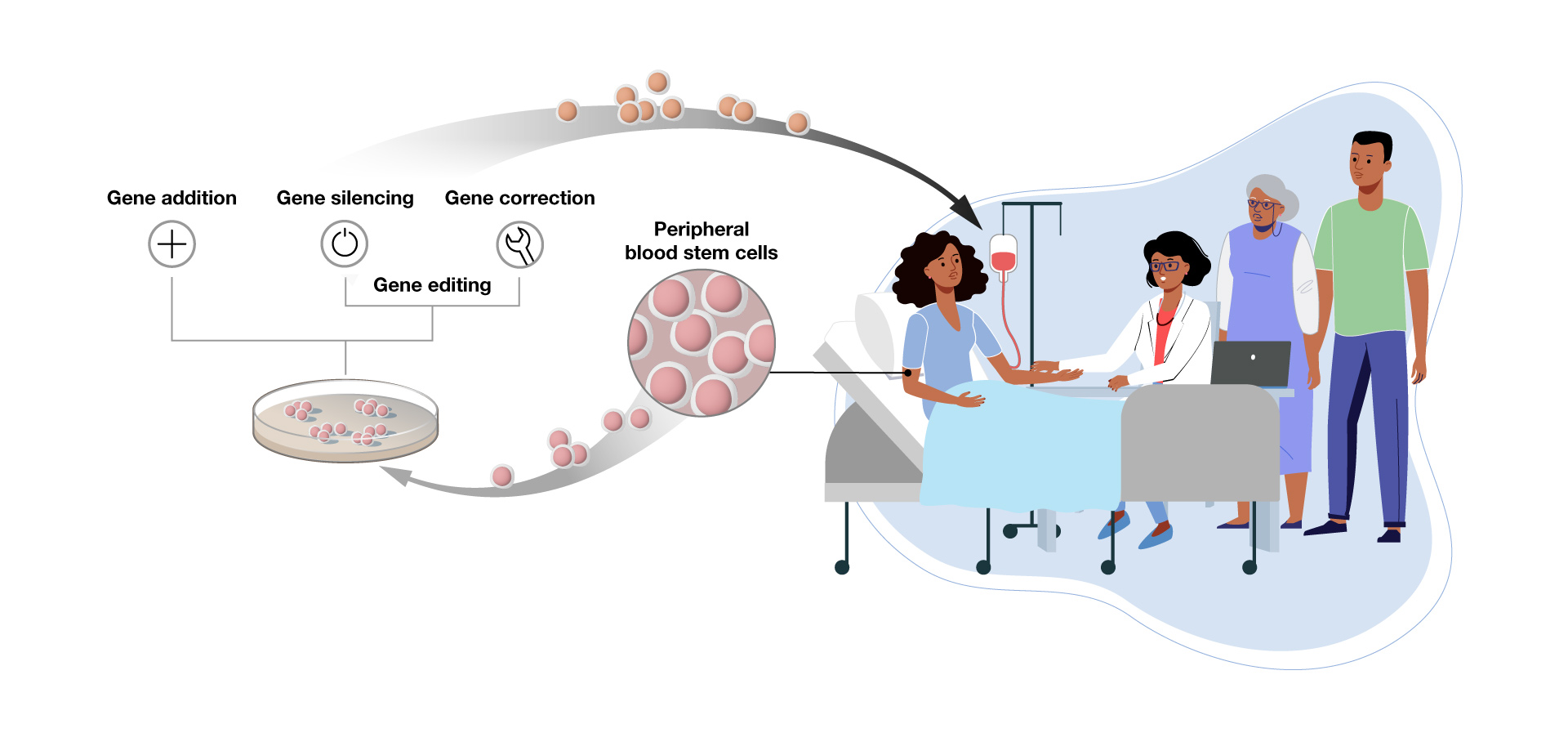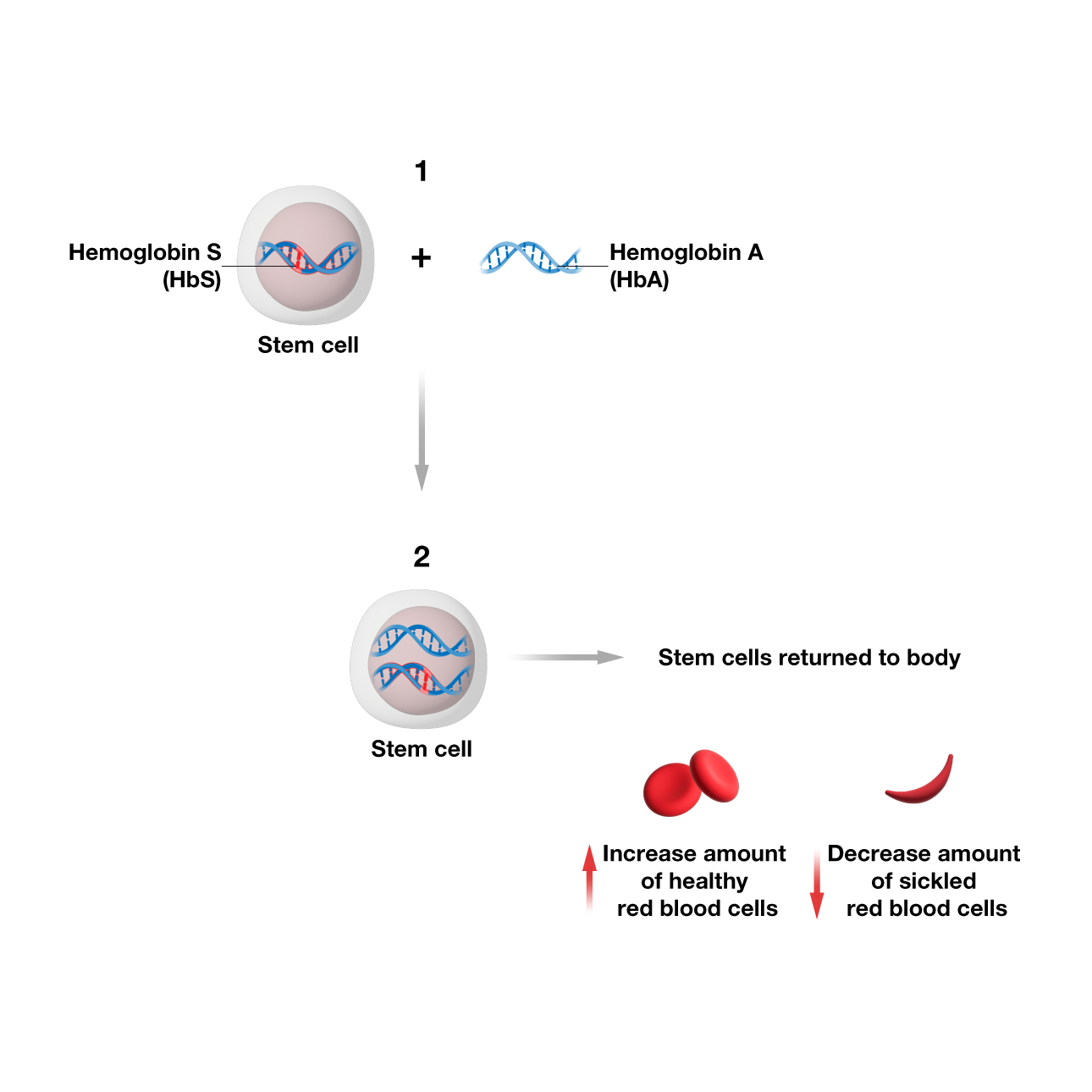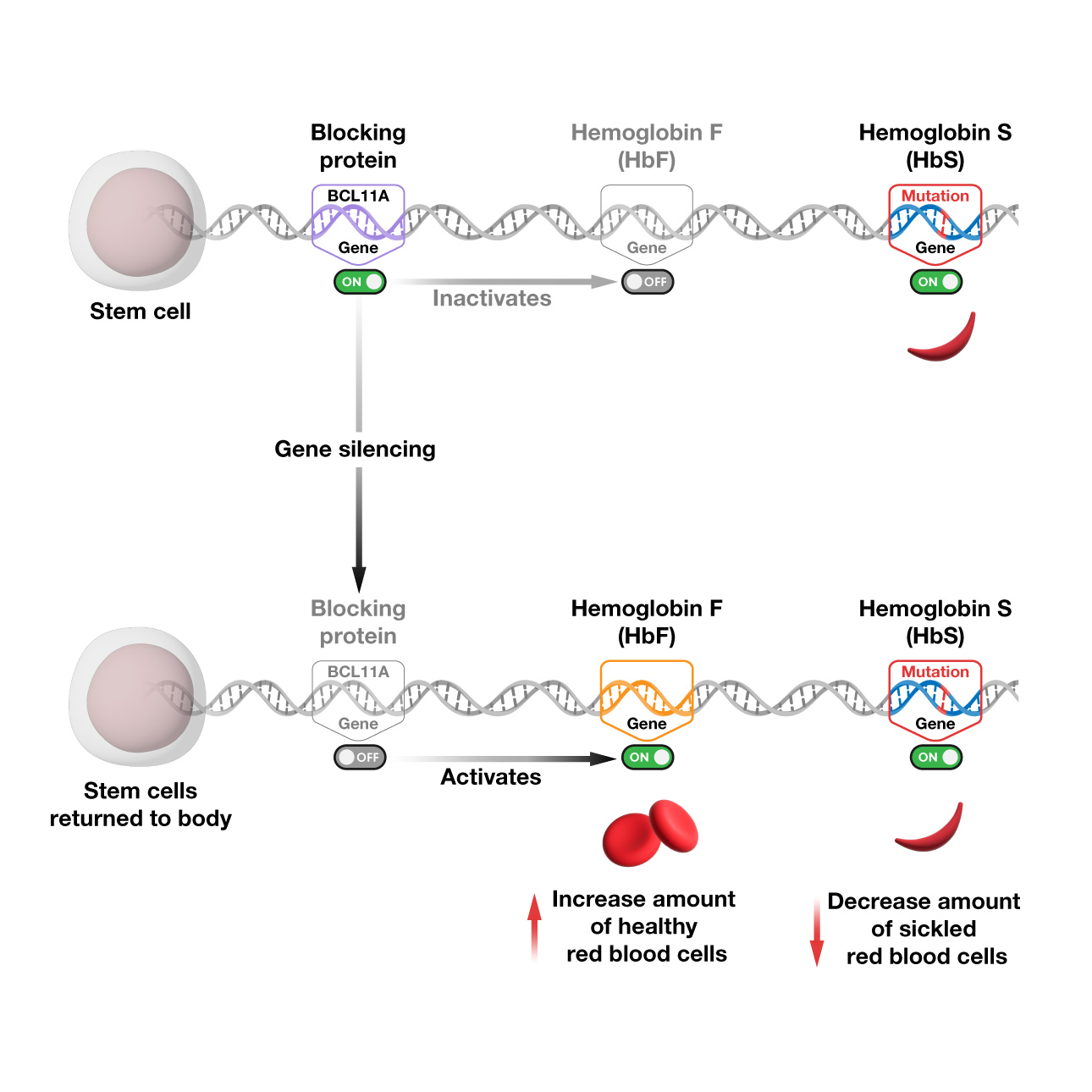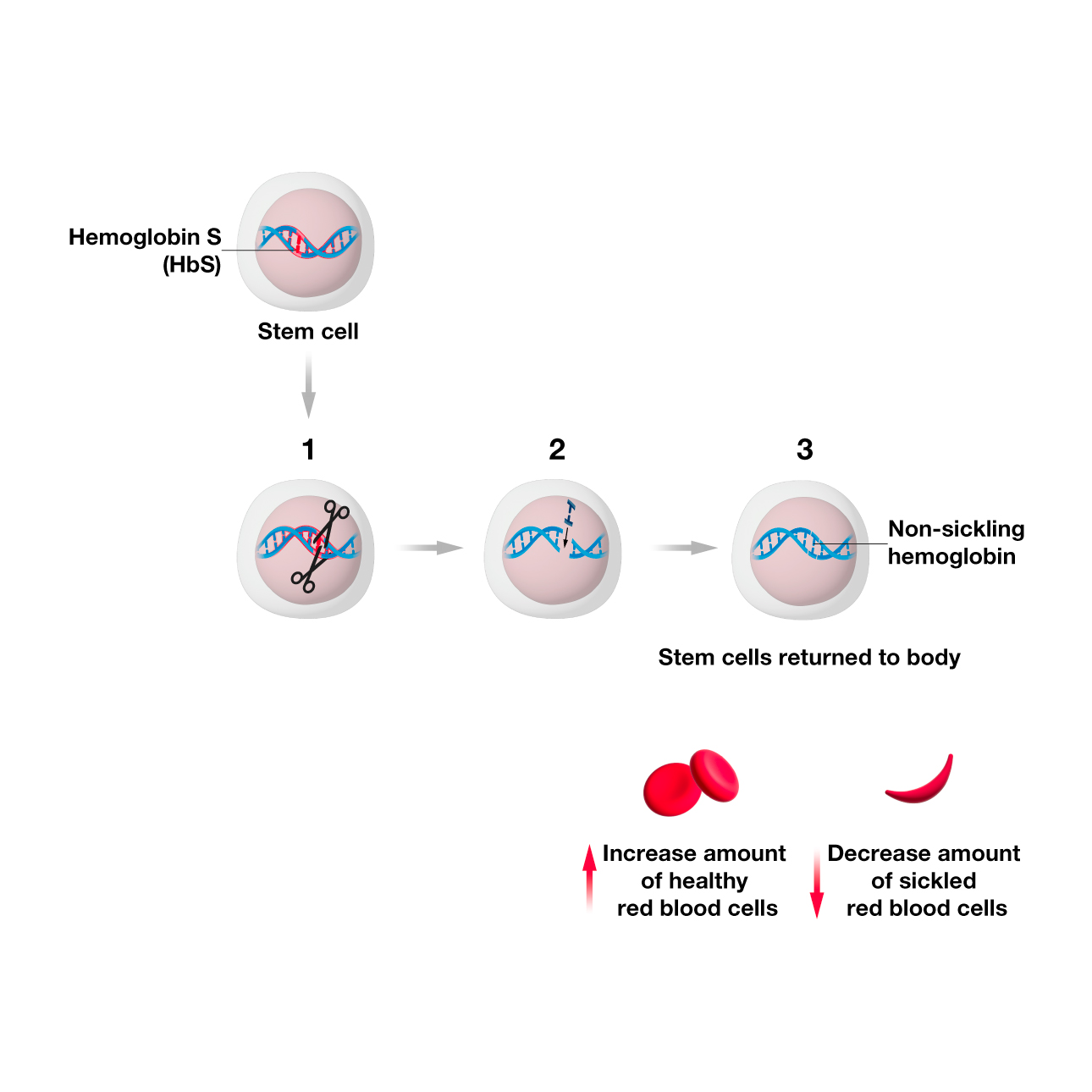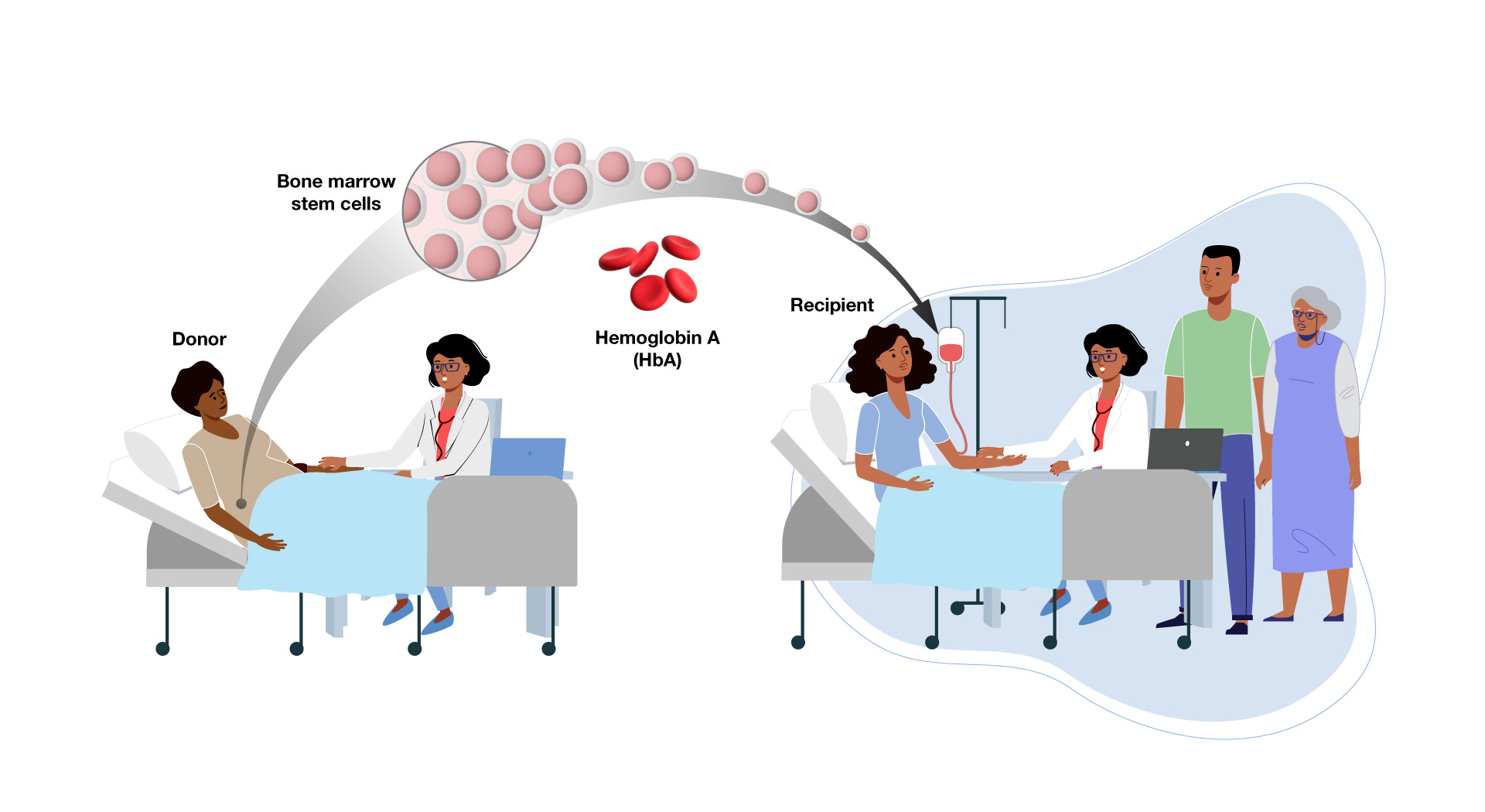Types of treatments
A variety of approaches target the blood stem cells to reduce your symptoms of sickle cell disease. Gene therapies use your own stem cells, while bone marrow transplants use the stem cells of a matched donor.
Gene therapy
In gene therapy, your stem cells are changed by altering part of your genes. Types of gene therapy include gene addition and gene editing. There are two types of gene editing: gene silencing and gene correction.
While each of these approaches introduces different types of gene-based changes, they start out the same: Your stem cells are collected and taken to a lab for modification.
After modifications are made in a lab, your stem cells are returned to your body. These approaches aim to decrease the amount of hemoglobin S in your red blood cells. If they successfully decrease the hemoglobin S, your cells will not be fragile or even sickle. As a result, these approaches can decrease the complications, treat or prevent symptoms of sickle cell disease. However, this type of gene therapy will neither reverse some complications (such as avascular necrosis) if they are present at the time of the gene therapy nor alter the genes that you pass on to your children.
